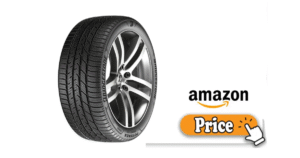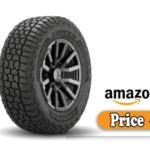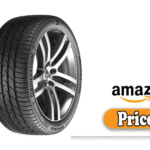Tires are more than just round rubber. They’re a crucial part of your driving safety, comfort, and vehicle performance. One of the most common questions consumers ask when shopping for new tires is: “Where are Bridgestone tires made?”
Whether you’re driving a compact sedan, SUV, truck, or performance car, Bridgestone is likely on your radar. As one of the world’s largest tire manufacturers, Bridgestone is known for its quality, reliability, and global reach. But does the origin of your tires impact quality? Is it still worth buying from a brand that produces tires across multiple continents?
In this in-depth guide, we’ll unpack everything you need to know about Bridgestone’s manufacturing locations, their design philosophy, performance insights, and how they compare to other top-tier brands. You’ll also get our take, plus answers to the most frequently asked questions. Let’s dive in.
What I Like About Bridgestone Tires
Bridgestone is a name that stands for trust, especially among professional drivers, car manufacturers, and even motorsports teams. Here’s what stands out most:
1. Global Reputation for Quality
With over 90 years in the business, Bridgestone has built a solid reputation by supplying OEM tires to major auto brands including Toyota, Honda, Ford, BMW, and Mercedes-Benz.
2. Innovative Technology
From Run-Flat Technology to NanoPro-Tech compounds, Bridgestone constantly invests in R&D to enhance traction, fuel efficiency, and durability.
3. Wide Range of Offerings
Bridgestone offers something for every vehicle and driving need—be it all-season, high-performance, touring, or off-road tires.
4. Consistent Road Performance
From city streets to mountain trails, Bridgestone tires deliver stable handling, low road noise, and impressive grip, especially with the Turanza and Dueler lines.
5. Commitment to Sustainability
Bridgestone is actively pursuing eco-friendly goals, including sustainable rubber sourcing and carbon-neutral manufacturing.
What Could Be Better
While Bridgestone tires are world-class, there are a few areas where some customers and experts see room for improvement:
1. Price Tag
Bridgestone tires often cost more than mid-range competitors. While the performance may justify the price, not everyone wants to stretch their budget.
2. Snow and Ice Traction
Some all-season models (like the Ecopia line) may underperform in extreme winter conditions unless specifically winter-rated.
3. Limited Warranty Coverage on Some Models
Although many tires have solid warranties, some Bridgestone models offer shorter mileage warranties than expected for their price range. 👉🏿👉🏻 Check the Latest Price and Offer at Amazon 👈🏻👈🏿
👉🏿👉🏻 Check the Latest Price and Offer at Amazon 👈🏻👈🏿
My Personal Experience with Bridgestone Tires
After more than two decades of driving various vehicles from compact city cars to highway cruisers, I’ve had the chance to test several Bridgestone models across different terrains.
City Driving: Turanza QuietTrack
I once had a set of Bridgestone Turanza QuietTrack tires on my midsize sedan. The difference in cabin noise was noticeable almost instantly. The ride became smoother, quieter, and more composed, especially on long highway drives.
SUV Performance: Dueler H/L Alenza Plus
For my crossover SUV, I switched to Bridgestone Dueler H/L Alenza Plus and was impressed bitsir grip in the rain and cornering stability. They also held up well in light snow conditions.
Fuel Efficiency: Ecopia EP422 Plus
On a hybrid vehicle, I used the Ecopia EP422 Plus tires. The low rolling resistance helped improve fuel economy, though the performance in icy conditions was average.
In short, Bridgestone delivers solid, high-quality tires that live up to their reputation in most categories.
Design Philosophy of Bridgestone Tires
Bridgestone takes a science-first approach to tire engineering. Their design philosophy revolves around balance, innovation, and real-world data. Here’s how that plays out:
1. NanoPro-Tech™
This advanced compound technology enhances fuel efficiency by reducing rolling resistance without compromising grip.
2. 3D Full-Depth Sipes
Bridgestone uses full-depth sipes in many all-season tires to maintain wet and snow performance over the life of the tire.
3. QuietTrack Technology
Used in Turanza models, this tech minimizes road noise with resonance-reducing tread patterns and sound-dampening materials.
4. Casing Construction
Each Bridgestone tire is built with precisely engineered plies and steel belts, optimizing ride comfort and load durability.
Performance on the Road
So, how do Bridgestone tires hold up in real driving conditions? Here’s a breakdown:
1. Dry Road Handling
Across most models, dry performance is tight, confident, and responsive. Their ultra-high-performance models like Potenza RE-71RS are favorites in auto sports.
2. Wet Weather Traction
Thanks to advanced siping and water-evacuation grooves, Bridgestone tires remain stable and grippy in rain, especially the WeatherPeak and DriveGuard models.
3. Snow & Ice
While Bridgestone offers winter-specific tires like the Blizzak series (which are outstanding), some all-seasons are not ideal for deep snow or black ice.
4. Off-Road & Touring
The Dueler and Alenza series shine in off-road and long-distance driving. They offer great comfort, noise control, and traction on gravel, dirt, and asphalt.
Build Quality & Manufacturing Process
Now to the key question: Where are Bridgestone tires made? The answer is more global than you might expect.
Global Headquarters
Bridgestone Corporation is based in Tokyo, Japan, and was founded in 1931. The company acquired Firestone Tire & Rubber Company (based in Akron, Ohio) in 1988, significantly expanding its U.S. operations.
Countries Where Bridgestone Tires Are Made:
- United States – Tennessee, North Carolina, South Carolina, Illinois, and Iowa
- Japan – Kurume, Tochigi, and Hikone plants
- Mexico
- Canada
- Brazil
- Thailand
- Indonesia
- China
- India
- South Africa
- France
- Poland
- Italy
With more than 180 manufacturing plants worldwide, Bridgestone leverages global scale without compromising on localized quality standards.
Key U.S. Plants:
- Wilson, North Carolina
- Aiken County, South Carolina
- Bloomington, Illinois
- Des Moines, Iowa (Agricultural/Heavy equipment)
- LaVergne, Tennessee
All of these American facilities follow strict quality control and are ISO-certified for safety, environmental, and operational excellence.
How to Tell Where Your Bridgestone Tire Was Made
To identify the origin of your tires, simply check the DOT (Department of Transportation) code stamped on the sidewall. The first two characters represent the plant code.
For example:
- DOT 1C – Made in Wilson, NC
- DOT 2M – Made in Aiken, SC
- DOT W2 – Made in Japan (Hikone)
- DOT 7B – Made in Thailand
Alternative Tire Brands to Consider
Bridgestone is a premium brand, but depending on your needs, here are a few solid alternatives:
1. Michelin
Known for superior ride comfort and durability. Often priced similarly to Bridgestone, Michelin is a leader in premium all-season and touring tires.
2. Continental
A great option for wet weather and winter traction. Continental’s German engineering is hard to beat in terms of handling and braking.
3. Goodyear
As an American staple, Goodyear offers a wide range of high-performing, reliable tires often at more accessible price points.
4. Pirelli
Italian-made performance tires with a focus on sports handling. Great for luxury or sport sedans.
Read More: Quaker State vs Valvoline: A Comprehensive Comparison
Final Thought: Should You Choose Bridgestone Tires
Yes—if quality, innovation, and global reliability matter to you.
While they may be on the higher end of the price spectrum, Bridgestone tires offer a compelling package of long-term value, safety, and performance.
So, where are Bridgestone tires made?
All over the world, but many that are sold in North America are made in U.S. facilities that uphold strict quality control and innovation standards. Bridgestone’s hybrid model of global manufacturing and local adaptation means you’re likely getting a product optimized for your driving conditions—whether it’s city roads, highways, or rugged terrain.
FAQs: Where Are Bridgestone Tires Made
1. Are Bridgestone tires made in the USA?
Yes, many are. Bridgestone operates several manufacturing plants across the U.S., including North Carolina, South Carolina, Illinois, Iowa, and Tennessee.
2. How do I know where my Bridgestone tire was manufactured?
Look for the DOT code on the sidewall of your tire. The first two characters correspond to a manufacturing plant. For example, “DOT 1C” indicates Wilson, NC.
3. Are Bridgestone and Firestone the same company?
Yes. Bridgestone acquired Firestone in 1988. While they share resources and technology, both brands maintain distinct product lines.
4. Are Bridgestone tires good for snow?
Yes, especially the Blizzak series, which is widely considered one of the best winter tire lines in the world.
5. Are Bridgestone tires worth the money?
If you’re looking for high-quality, long-lasting, and performance-optimized tires, then Bridgestone tires are worth the investment.
6. Are all Bridgestone tires made in Japan?
No. While the company originated in Japan, it now operates over 180 plants worldwide, including several in the U.S., Canada, and Europe.



